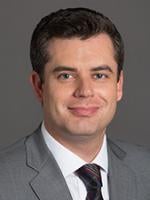Introduction
On October 11, 2017, the Fund Finance Association (the “FFA”) hosted its 3rd Annual European Fund Finance Symposium (the “Conference”) at the Landmark Hotel in London. Forty-two market participants sponsored the Conference and 444 people attended, both substantial increases over years past. There were multiple panel sessions covering topics including private equity fund formation, subscription credit facility transaction structures (“Facilities”), Hybrid and NAV facilities (“NAV Facilities”) and forecasts for future market developments. This article provides a market update of the European Fund Finance market for those unable to attend the Conference.
Fund Formation
Christopher Elvin, Head of Private Equity Products at Preqin, provided the Conference with a data presentation derived from his firm’s extensive data collection on private capital in the region.[1] Private equity fundraising, the life blood of the Fund Finance market, remains robust in Europe. Preqin data shows $134 billion of Europe-focused private capital raised year-to-date, continuing the rising trajectory experienced in 2016. As is the case across the globe, average private equity fund (each, a “Fund”) size continues to increase. Dry powder – the collateral supporting Facilities – stands at an all-time high for Europe, now in excess of $400 billion. This fundraising success has not surprisingly fueled continued growth of the Facility market.
Fund Finance Market
-
Facility Structures. Panelists did not have many material new market developments in Facility structures to discuss at the Conference. To be fair, in a growing market with virtually zero negative credit events, that is probably quite a good thing. Facility structures, credit performance and market growth all echoed the favorable discussions at prior conferences. Panelists did note that Facility structures continue their “convergence to the mean,” a common description of the market trend whereby Facility structures are increasingly the same across the United States, Europe and Asia. This is driven by two primary factors: First, for a global bank with a centralized Facility product offering, it is very challenging to maintain different structural policies across geographies. Second, as Fund sizes have increased, Facilities often need to be syndicated, further encouraging structural standardization.
-
Hybrid and NAV-Based Facilities. NAV Facilities were discussed at length at the Conference, including in their own breakout session. Panelists were generally bullish that this product segment will continue to grow. The explosion of private debt Funds, the easiest asset class for Lenders to structure a NAV Facility for, has been the primary driver for the product. But while panelists were generally optimistic, there was honest and sobering discussion around the challenges to consummating NAV Facilities and a clear recognition that NAV Facilities remain only a small segment of the overall Fund Finance market in Europe. For example, panelists noted that Lenders familiar with the Facility product often sit in different groups from the groups familiar with underwriting the investments (“Investments”), thus complicating the delivery of the product. Additionally, establishing a NAV Facility at the Fund’s inception necessitates structuring parameters that define advance rates for hypothetical future Investments, which may or may not be optimal for the Fund as its actual portfolio develops. Finally, with the bespoke structures and customized solutions that tend to develop in NAV Facilities, the syndication market remains thin.
-
Negative Press. The recent press articles showcasing the Facility product in a somewhat negative light were discussed in passing at the Conference. No panelist reported any material impact from the press coverage on their daily businesses. While sensationalized headlines may drive clicks to web links, panelists seemed confident that Investors understand the Facility product and are unlikely to be unduly swayed by inflammatory press coverage.
-
ILPA Guidelines. The Institutional Limited Partners Association’s Guidelines for Facilities (the “Guidelines”) were discussed at length at the Conference, including extended remarks from Nick Mitra, a Board Member of the FFA, as to the FFA’s view of the Guidelines. Mitra reported that the FFA believes disclosure and transparency around Fund Finance is already robust, but that the FFA will always support clear communication between Sponsors and Investors as to the use of Facilities and any other indebtedness. He reported that the FFA is currently working on a written response to the Guidelines and hopes to maintain a dialogue with ILPA on an updated version of the Guidelines ILPA has suggested will be forthcoming next year.
-
New Entrants and Hiring. New Lenders continue to emerge in Europe seeking to identify certain segments of the Fund Finance markets where they can be relevant for their Fund sponsor (“Sponsor”) clients. Additionally, several Lenders who have been predominantly active in the United States have been recently trying to build out their European product offering, including multiple Lenders who have hired bankers based in London for the first time. The employment market for bankers seems to have finally caught up with Facility growth, as many Lenders were discussing their hiring plans at the Conference. Banker transitions between Lenders has increased significantly in the last year as well, a trend we expect to continue and perhaps accelerate in the spring 2018 timeframe.
-
Women in Fund Finance. The Women in Fund Finance (“WFF”) subgroup of the FFA hosted a breakout session at the Conference with a panel composed of seasoned industry participants, both female and male. Panelists gave suggestions on mentoring, retention and unconscious bias. The panel was very well received and sparked many follow up discussions throughout the day. WFF has several events planned in the future; details are available on the FFA’s website.
Market Forecasts
The vast majority of attendees departed the Conference bullish on the near‑term growth potential of the Fund Finance markets in Europe. Absent a systematic event, there are simply too many positive trends to take a negative view. According to Preqin data, 636 distinct Funds with a European focus are presently fundraising. Distributions have materially exceeded capital calls each of the past four calendar years (and the trend continues year-to-date), meaning most Investors will need to increase their allocation to private equity to merely maintain their current asset allocation. In fact, 95% of Investors have reported to Preqin that they intend to increase or maintain their allocation to the region in the next twelve months. Combined with the anecdotal reports from panelists as to current and prospective deal flow, we expect steady and measured growth to continue in the European market into 2018.
Conclusion
The European Fund Finance Market appears poised to maintain and continue its recent growth trajectory. We see the region as a potential source of business growth for Lenders and advisors, perhaps with fewer structural challenges compared to the Asia market. We look forward to the 2018 Conference and the further development of the European market.
1 The slides from Mr. Elvin’s presentation are available on the FFA’s website at www.fundfinanceassociation.com.






 />i
/>i

